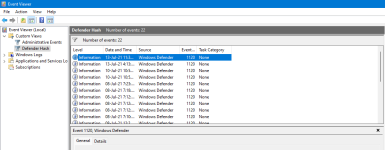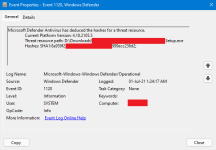Andy Ful
From Hard_Configurator Tools
Thread author
Verified
Honorary Member
Top Poster
Developer
Well-known
- Dec 23, 2014
- 8,914
Problem solved. Microsoft simply removed these detections from PowerShell with the security intelligence update version 1.341.296.0.









